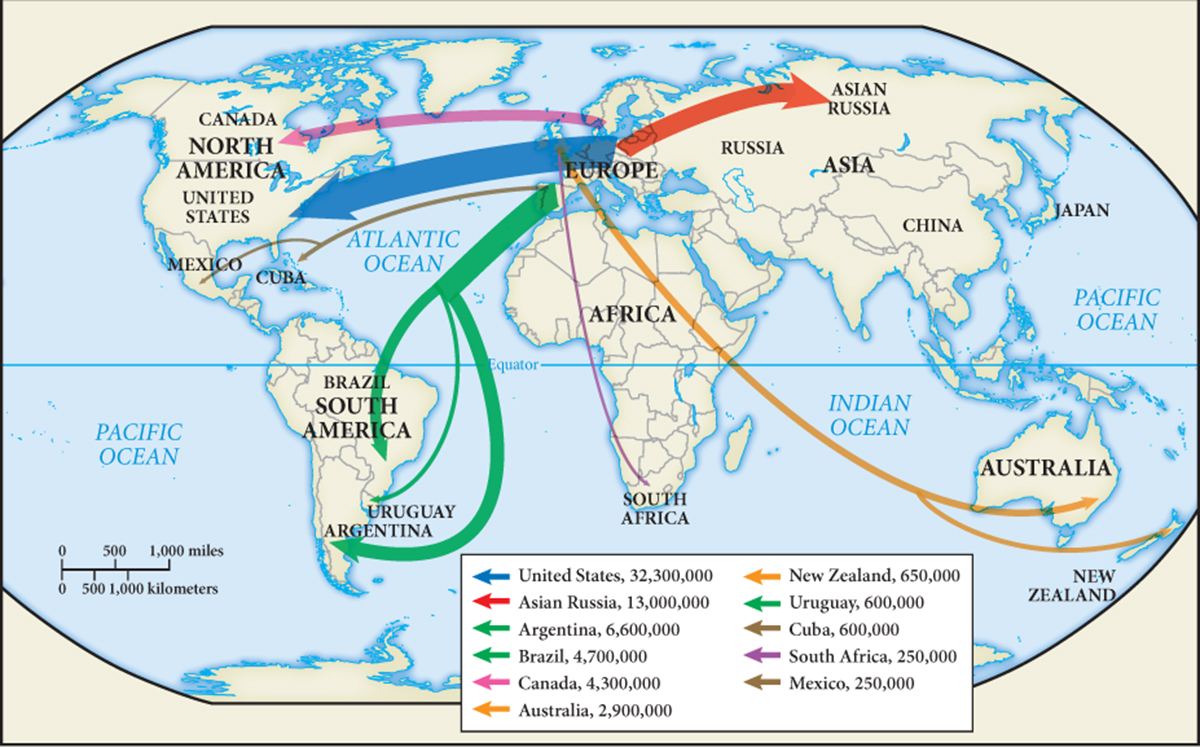Europeans in Motion
Europe’s Industrial Revolution prompted a massive migratory process that uprooted many millions, setting them in motion both internally and around the globe. Within Europe itself, the movement of men, women, and families from the countryside to the cities involved half or more of the region’s people by the mid-

This huge process had a transformative global impact, temporarily increasing Europe’s share of the world’s population and scattering Europeans around the world. In 1800, less than 1 percent of the total world population consisted of overseas Europeans and their descendants; by 1930, they represented 11 percent.27 In particular regions, the impact was profound. Australia and New Zealand became settler colonies, outposts of European civilization in the South Pacific that overwhelmed their native populations through conquest, acquisition of their lands, and disease. In Australia, the initial settlers derived from the unwanted of British society: convicts were sentenced to penal colonies on the island continent, and by 1867 over 165,000 of them had arrived. By the end of the nineteenth century, New Zealand’s European population, based on immigration of free people, outnumbered the native Maori by 700,000 to 40,000. Smaller numbers of Europeans found their way to South Africa, Kenya, Rhodesia, Algeria, and elsewhere, where they injected a sharp racial divide into those colonized territories.
But it was the Americas that felt the brunt of this huge movement of people. Latin America received about 20 percent of the European migratory stream, mostly from Italy, Spain, and Portugal, with Argentina and Brazil accounting for some 80 percent of those immigrants. Considered “white,” they enhanced the social weight of the European element in those countries and thus enjoyed economic advantages over the mixed-
In several ways the immigrant experience in the United States was distinctive. It was far larger and more diverse than elsewhere, with some 32 million newcomers arriving from all over Europe between 1820 and 1930. Furthermore, the United States offered affordable land to many and industrial jobs to many more, neither of which was widely available in Latin America. And the United States was unique in turning the immigrant experience into a national myth—
In the vast domains of the Russian Empire, a parallel process of European migration likewise unfolded. After the freeing of the serfs in 1861, some 13 million Russians and Ukrainians migrated to Siberia, where they overwhelmed the native population of the region, while millions more settled in Central Asia. By the end of the century, native Siberians totaled only 10 percent of that region’s population. The availability of land, the prospect of greater freedom from tsarist restrictions and from the exploitation of aristocratic landowners, and the construction of the trans-